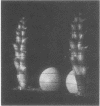Abstract
Holographic interferometry has been used to plot graphs of the phototropic and geotropic bending undergone by a mature Stapelia variegata Linn over a 5-minute period. The holographic interferometric technique is shown to have the advantage of measuring displacements at least as small as 0.16 micrometers which permits observation of extremely slow plant motions over time periods of a few minutes. In addition, the holographic technique provides a permanent record of displacement information over the entire plant in a single hologram. The short 5-minute period required to produce a holographic interferogram has permitted the monitoring of slow plant motions by recording a series of consecutive holograms at 5-minute intervals over a 75-minute period. The results have been plotted on a graph thereby capturing for the first time such small displacement, velocity, and acceleration of a mature plant as a function of time.
Full text
PDF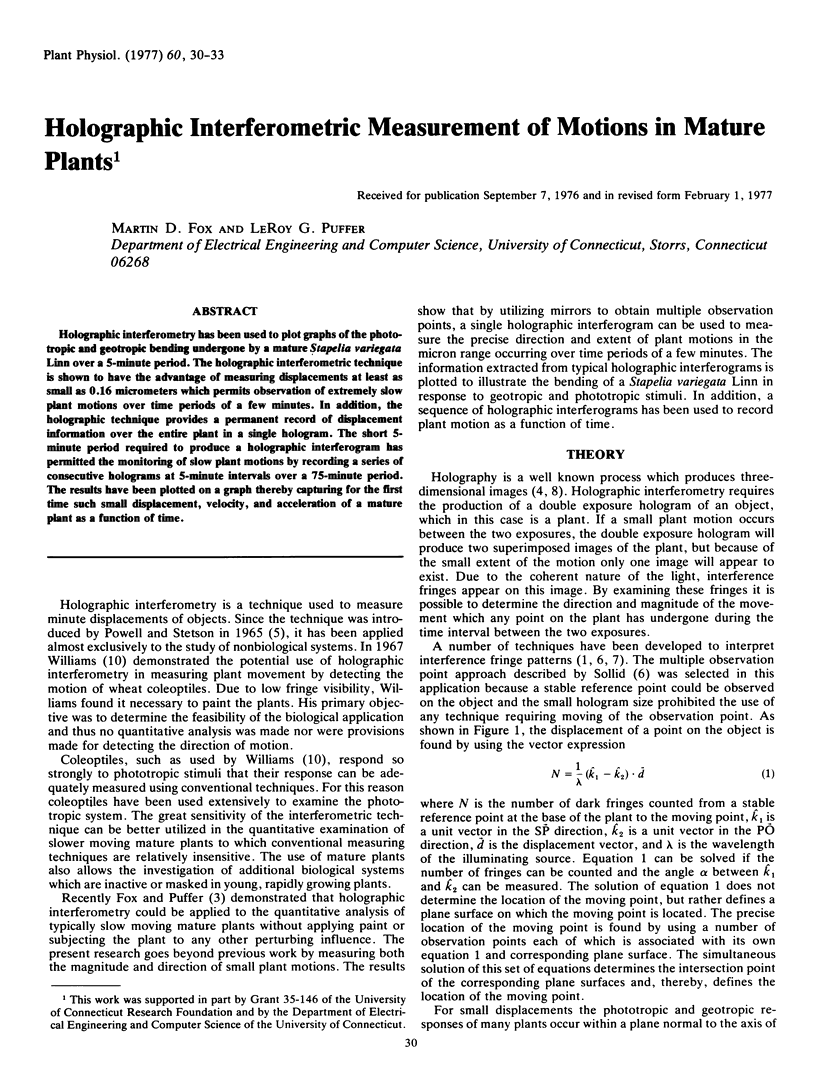
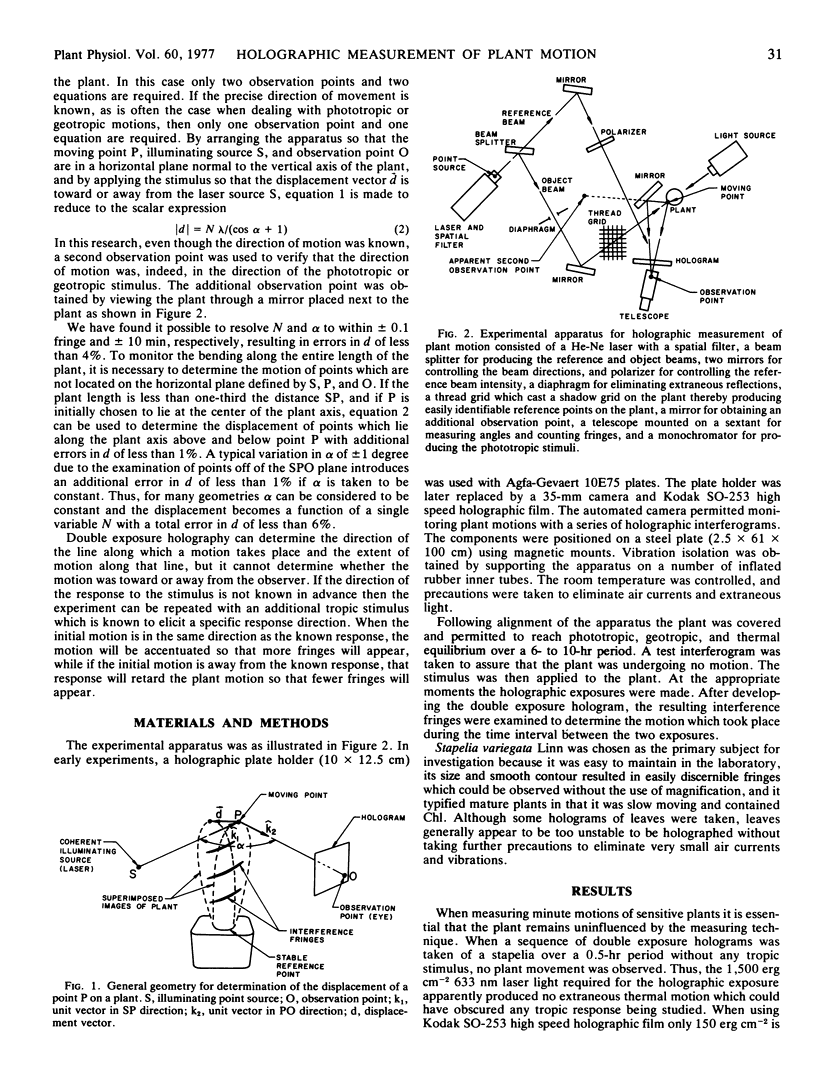
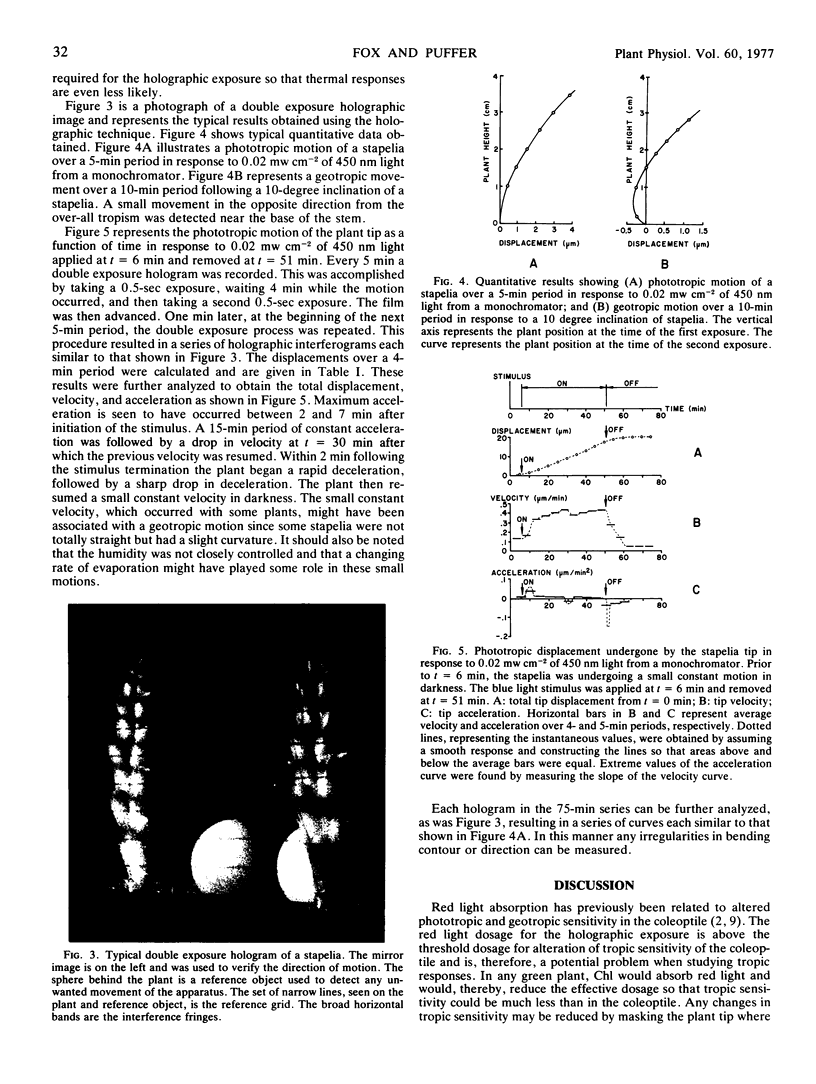
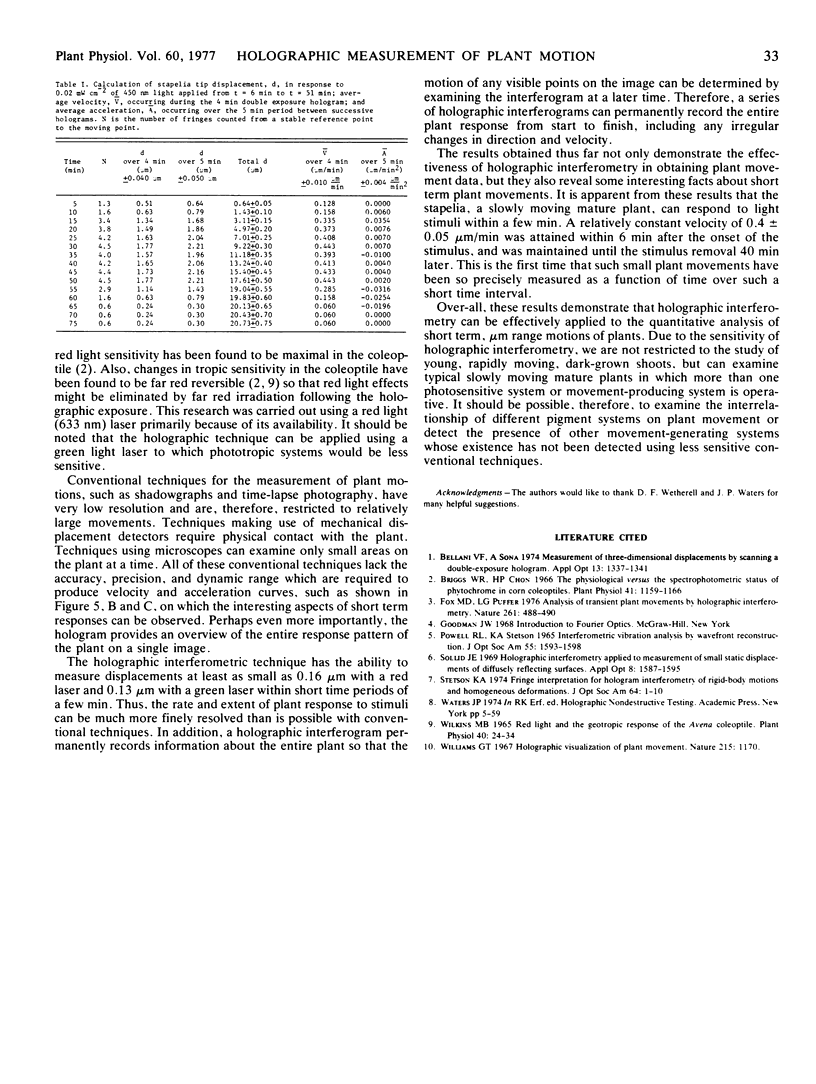
Images in this article
Selected References
These references are in PubMed. This may not be the complete list of references from this article.
- Briggs W. R., Chon H. P. The physiological versus the spectrophotometric status of phytochrome in corn coleoptiles. Plant Physiol. 1966 Sep;41(7):1159–1166. doi: 10.1104/pp.41.7.1159. [DOI] [PMC free article] [PubMed] [Google Scholar]
- Wilkins M. B. Red Light and the Geotropic Response of the Avena Coleoptile. Plant Physiol. 1965 Jan;40(1):24–34. doi: 10.1104/pp.40.1.24. [DOI] [PMC free article] [PubMed] [Google Scholar]



